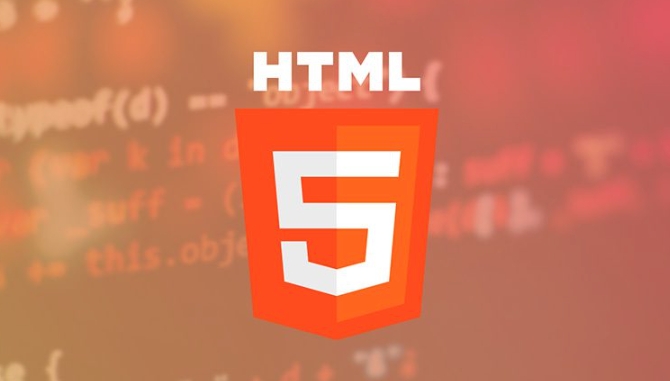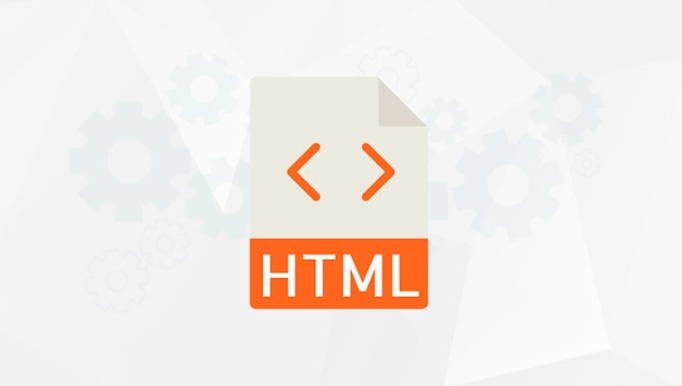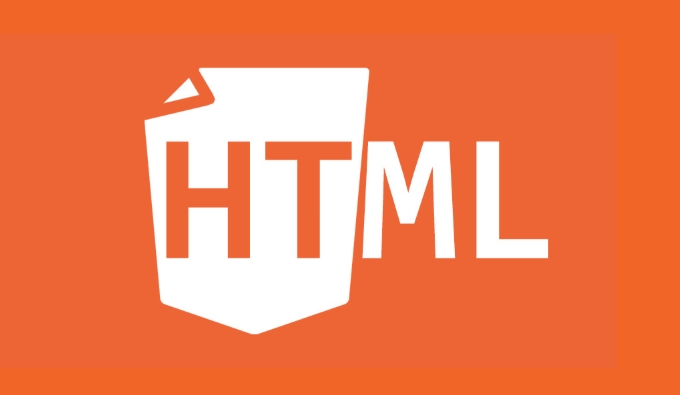 Web Front-end
Web Front-end
 HTML Tutorial
HTML Tutorial
 How do event handler html attributes like onclick or onmouseover work?
How do event handler html attributes like onclick or onmouseover work?
How do event handler html attributes like onclick or onmouseover work?
Jun 27, 2025 am 01:58 AMInline event handlers like onclick or onmouseover attach JavaScript code directly to HTML elements, executing when the specified event occurs. 1) The browser parses HTML and creates an event listener for the attribute. 2) When the event (like a click or hover) happens, the browser runs the JavaScript in the attribute. 3) Common events include onclick, onmouseover, onmouseout, onload, and onsubmit. 4) Drawbacks include mixing HTML and JavaScript, limited flexibility, and inability to support multiple handlers. 5) A better approach is using addEventListener to separate HTML from JavaScript. 6) Gotchas include ensuring valid syntax, avoiding complex logic inline, and handling quotes properly.

When you see HTML attributes like onclick or onmouseover, what's happening is that you're directly attaching a piece of JavaScript code to an element, which runs when the specified event occurs. These are called inline event handlers.

They work by listening for specific events (like a click or mouse hover), and when that event happens on the element, the browser executes the JavaScript code you provided in the attribute value.

How Inline Event Handlers Are Triggered
When you write something like:
<button onclick="alert('Clicked!')">Click me</button>You're telling the browser: “When this button is clicked, run the JavaScript code inside the onclick attribute.”

Here’s how it works step-by-step:
- The browser parses the HTML.
- It sees the
onclickattribute and creates an event listener behind the scenes. - When the user clicks the button, the browser executes the string inside
onclickas JavaScript.
This makes it very easy to add interactivity directly in your HTML, but it also has some downsides we’ll talk about later.
Common Events You'll See
There are many built-in events you can use with these attributes. Some of the most common ones include:
onclick: Runs when the element is clicked.onmouseover: Triggers when the mouse pointer moves over the element.onmouseout: Runs when the mouse pointer leaves the element.onload: Fires when the page or an image finishes loading.onsubmit: Triggers when a form is submitted.
For example:
<div onmouseover="this.style.backgroundColor='yellow'" onmouseout="this.style.backgroundColor='white'"> Hover over me! </div>
This will change the background color of the div when the user hovers over it and revert it when the mouse leaves.
Why You Might Want to Avoid Them
While inline event handlers are simple and quick to use, they come with a few drawbacks:
- Mixing HTML and JavaScript makes your code harder to read and maintain.
- They have limited flexibility compared to modern event handling methods like
addEventListener. - They don’t support multiple handlers for the same event — if you try to assign another
onclicksomewhere else, it might get ignored or overwritten.
A better practice is to separate your JavaScript from your HTML:
<button id="myButton">Click me</button>
<script>
document.getElementById('myButton').addEventListener('click', function() {
alert('Clicked!');
});
</script>This keeps your HTML clean and makes your JavaScript easier to manage, especially in larger projects.
A Few Gotchas to Watch For
- Make sure the JavaScript code inside the attribute is valid. If there's a syntax error, it won't run.
- Avoid using too much logic directly in the attribute. Instead, call a function defined in a
<script>block or external JS file. - Be careful with quotes — if you're using double quotes in your HTML attribute, make sure your JavaScript string uses single quotes (or escape them properly).
Example of a potential problem:
<!-- This will break -->
<button onclick="alert("Oops!")">Don't do this</button>
<!-- This works -->
<button onclick="alert('Better')">Do this instead</button>So while onclick, onmouseover, and other inline event handlers are functional and easy to use, they’re best suited for quick tests or small scripts. For real applications, keeping your JavaScript separate is cleaner and more scalable.
The above is the detailed content of How do event handler html attributes like onclick or onmouseover work?. For more information, please follow other related articles on the PHP Chinese website!

Hot AI Tools

Undress AI Tool
Undress images for free

Undresser.AI Undress
AI-powered app for creating realistic nude photos

AI Clothes Remover
Online AI tool for removing clothes from photos.

Clothoff.io
AI clothes remover

Video Face Swap
Swap faces in any video effortlessly with our completely free AI face swap tool!

Hot Article

Hot Tools

Notepad++7.3.1
Easy-to-use and free code editor

SublimeText3 Chinese version
Chinese version, very easy to use

Zend Studio 13.0.1
Powerful PHP integrated development environment

Dreamweaver CS6
Visual web development tools

SublimeText3 Mac version
God-level code editing software (SublimeText3)

Hot Topics
 Explain the purpose of the role attribute in ARIA.
Jun 14, 2025 am 12:35 AM
Explain the purpose of the role attribute in ARIA.
Jun 14, 2025 am 12:35 AM
ARIA's role attribute is used to define the role of web elements and improve accessibility. 1. Role attribute helps assistive technology to understand the functions of elements, such as buttons, navigation, etc. 2. Use role attributes to assign specific roles to non-semantic HTML elements. 3. The role attribute should be consistent with the element behavior and be verified by the accessibility tool test.
 HTML and Design: Creating the Visual Layout of Websites
Jun 14, 2025 am 12:39 AM
HTML and Design: Creating the Visual Layout of Websites
Jun 14, 2025 am 12:39 AM
How to create a website layout? 1. Use HTML tags to define the content structure, such as, ,. 2. Control styles and positions through CSS, using box model, float or Flexbox layout. 3. Optimize performance, reduce HTTP requests, use cache and optimize images, and ensure responsive design.
 How do I stay up-to-date with the latest HTML standards and best practices?
Jun 20, 2025 am 08:33 AM
How do I stay up-to-date with the latest HTML standards and best practices?
Jun 20, 2025 am 08:33 AM
The key to keep up with HTML standards and best practices is to do it intentionally rather than follow it blindly. First, follow the summary or update logs of official sources such as WHATWG and W3C, understand new tags (such as) and attributes, and use them as references to solve difficult problems; second, subscribe to trusted web development newsletters and blogs, spend 10-15 minutes a week to browse updates, focus on actual use cases rather than just collecting articles; second, use developer tools and linters such as HTMLHint to optimize the code structure through instant feedback; finally, interact with the developer community, share experiences and learn other people's practical skills, so as to continuously improve HTML skills.
 How do I use the element to represent the main content of a document?
Jun 19, 2025 pm 11:09 PM
How do I use the element to represent the main content of a document?
Jun 19, 2025 pm 11:09 PM
The reason for using tags is to improve the semantic structure and accessibility of web pages, make it easier for screen readers and search engines to understand page content, and allow users to quickly jump to core content. Here are the key points: 1. Each page should contain only one element; 2. It should not include content that is repeated across pages (such as sidebars or footers); 3. It can be used in conjunction with ARIA properties to enhance accessibility. Usually located after and before, it is used to wrap unique page content, such as articles, forms or product details, and should be avoided in, or in; to improve accessibility, aria-labeledby or aria-label can be used to clearly identify parts.
 How do I create a basic HTML document?
Jun 19, 2025 pm 11:01 PM
How do I create a basic HTML document?
Jun 19, 2025 pm 11:01 PM
To create a basic HTML document, you first need to understand its basic structure and write code in a standard format. 1. Use the declaration document type at the beginning; 2. Use the tag to wrap the entire content; 3. Include and two main parts in it, which are used to store metadata such as titles, style sheet links, etc., and include user-visible content such as titles, paragraphs, pictures and links; 4. Save the file in .html format and open the viewing effect in the browser; 5. Then you can gradually add more elements to enrich the page content. Follow these steps to quickly build a basic web page.
 What is an HTML tag?
Jun 13, 2025 am 12:36 AM
What is an HTML tag?
Jun 13, 2025 am 12:36 AM
HTMLtagsareessentialforstructuringwebpages.Theydefinecontentandlayoutusinganglebrackets,ofteninpairslikeand,withsomebeingself-closinglike.HTMLtagsarecrucialforcreatingstructured,accessible,andSEO-friendlywebpages.
 How do I create checkboxes in HTML using the element?
Jun 19, 2025 pm 11:41 PM
How do I create checkboxes in HTML using the element?
Jun 19, 2025 pm 11:41 PM
To create an HTML checkbox, use the type attribute to set the element of the checkbox. 1. The basic structure includes id, name and label tags to ensure that clicking text can switch options; 2. Multiple related check boxes should use the same name but different values, and wrap them with fieldset to improve accessibility; 3. Hide native controls when customizing styles and use CSS to design alternative elements while maintaining the complete functions; 4. Ensure availability, pair labels, support keyboard navigation, and avoid relying on only visual prompts. The above steps can help developers correctly implement checkbox components that have both functional and aesthetics.
 How do I minimize the size of HTML files?
Jun 24, 2025 am 12:53 AM
How do I minimize the size of HTML files?
Jun 24, 2025 am 12:53 AM
To reduce the size of HTML files, you need to clean up redundant code, compress content, and optimize structure. 1. Delete unused tags, comments and extra blanks to reduce volume; 2. Move inline CSS and JavaScript to external files and merge multiple scripts or style blocks; 3. Simplify label syntax without affecting parsing, such as omitting optional closed tags or using short attributes; 4. After cleaning, enable server-side compression technologies such as Gzip or Brotli to further reduce the transmission volume. These steps can significantly improve page loading performance without sacrificing functionality.





